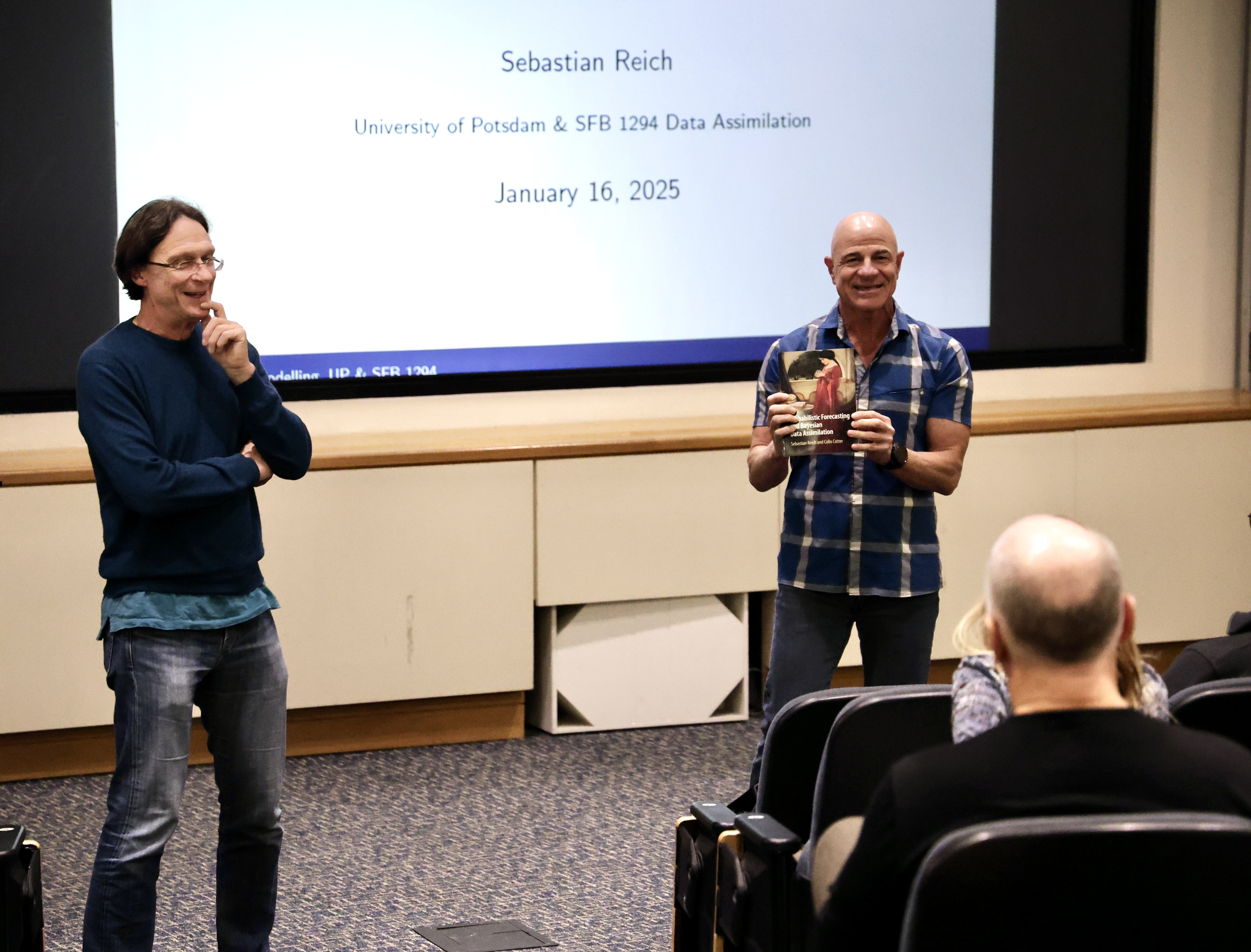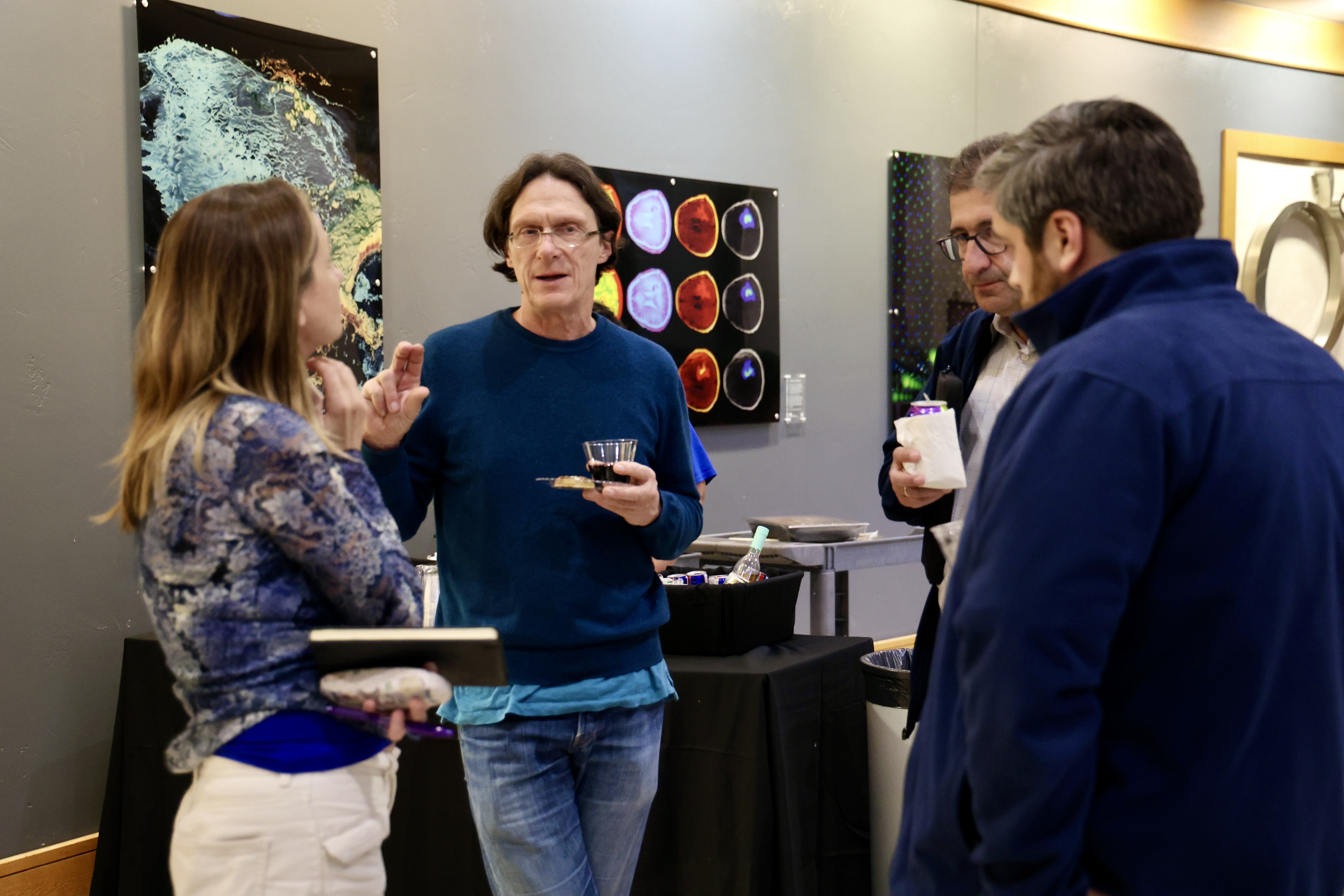Sebastian Reich, professor of numerical analysis at the University of Potsdam, delved into the emerging field of generative modeling, focusing on diffusion models and their applications in data forecasting at the Distinguished Lecture in Computational and Data Sciences at the Oden Institute for Computational Engineering and Sciences. Hosted by Principal Faculty member Omar Ghattas, the lecture on January 16, 2025 was delivered to a packed auditorium filled with students and faculty.
Inspired by a Ph.D. student’s enthusiasm for the topic, Reich explained he was Initially hesitant about the concept, which lead him to explore its potential in transforming complex data simulations and how diffusion models work by taking samples from an unknown distribution, such as images or weather data, and using a process that converts them into Gaussian noise. These models can then generate new, high-quality samples or provide advanced Bayesian inferences—critical for applications like weather forecasting.
Reich highlighted a breakthrough by Google, which utilized these models to recreate weather data from the past century. The result? More accurate predictions than traditional weather models, without relying entirely on physics-based data. This approach has the potential to predict complex phenomena, such as polar vortexes. “That said,” joked Reich, “nothing could predict the quarter inch of snow Austin might get this week.”
At the heart of Reich’s talk was the concept of Schrödinger bridges, a fundamental aspect of diffusion generative modeling. Schrödinger bridges are a mathematical framework used in generative modeling to find the optimal path between an initial noisy state and a target distribution, allowing for more efficient data generation by reducing unnecessary complexity in the process. A key part of the lecture explored how diffusion models could be applied to reduced-order modeling and their use in applications like machine learning, where they may out perform traditional techniques in both speed and accuracy.
Following the lecture, a reception was held, providing an opportunity for attendees to discuss the concepts further.
Reich’s expertise in numerical analysis, combined with his growing fascination with generative models, illuminated the future of data forecasting and simulation—pushing the boundaries of what is possible in both academia and industry.

